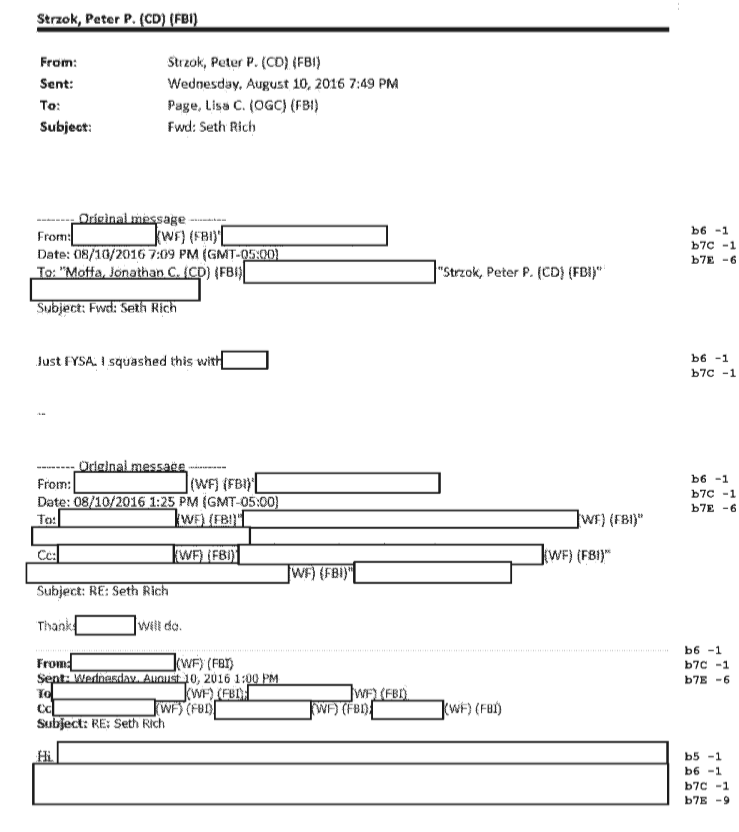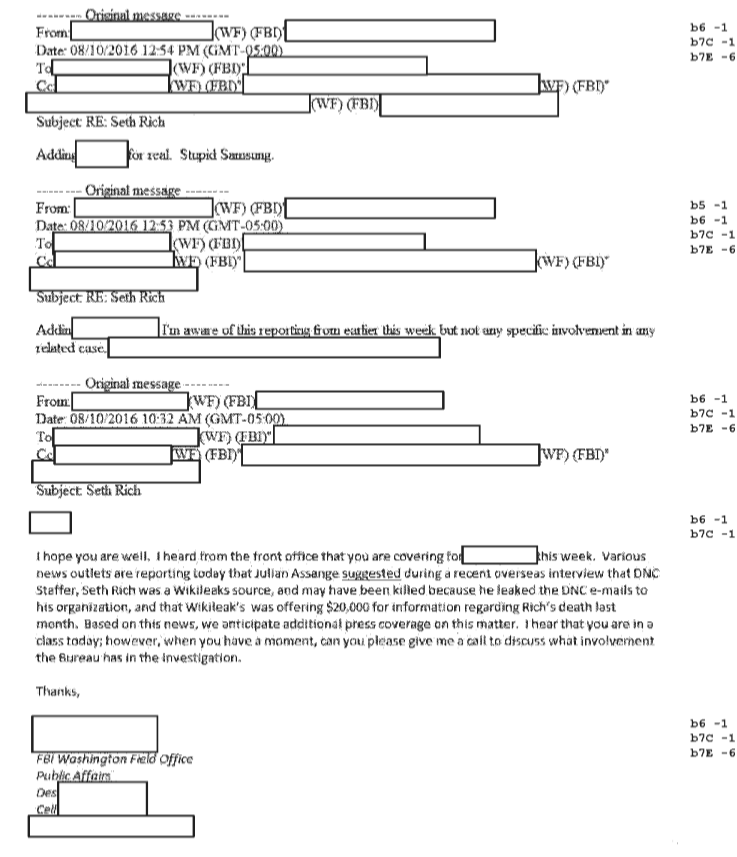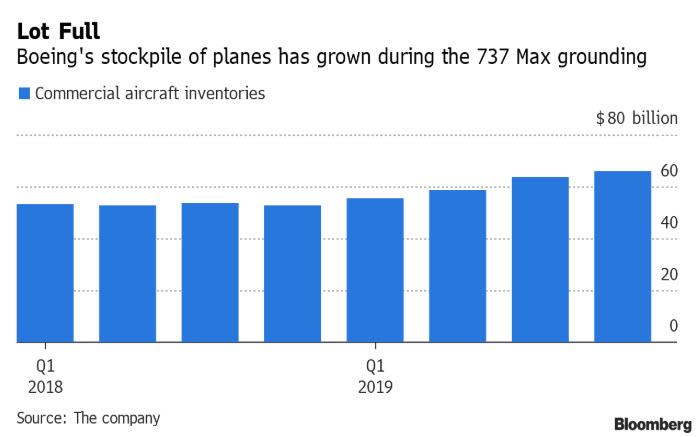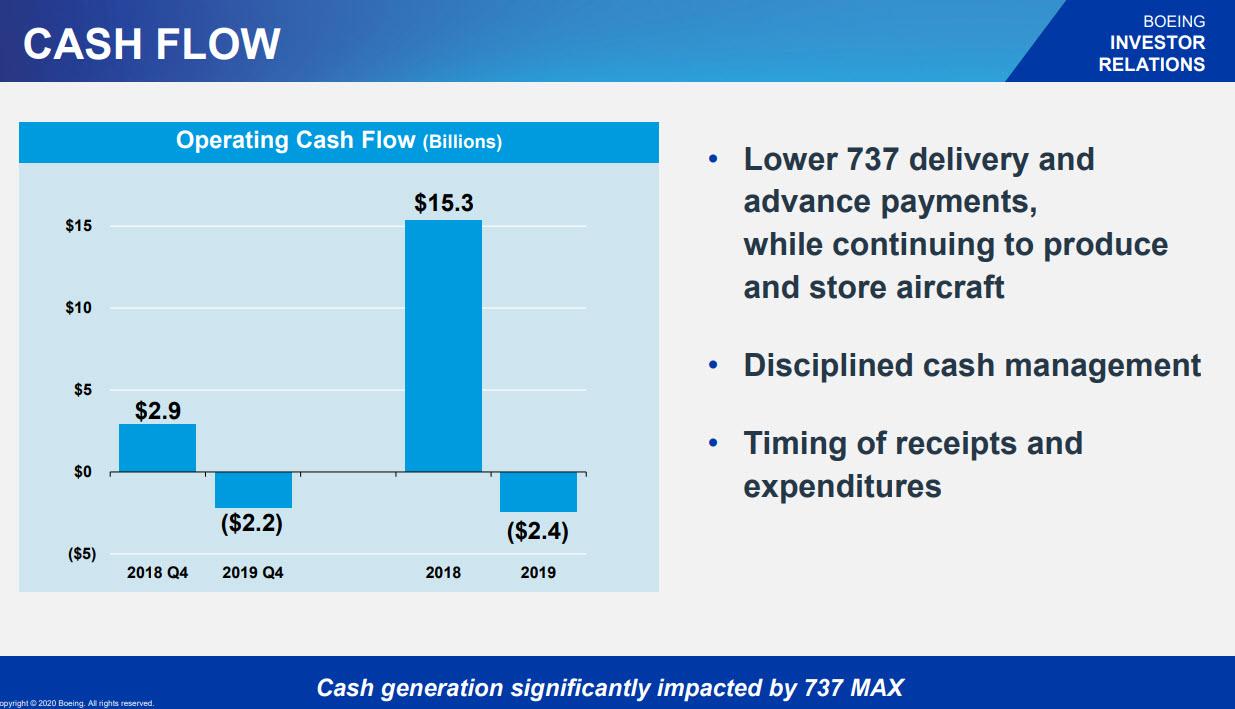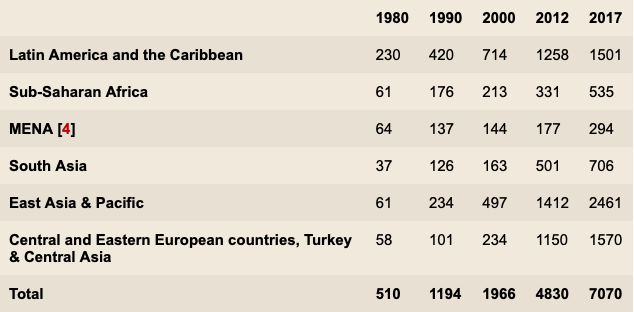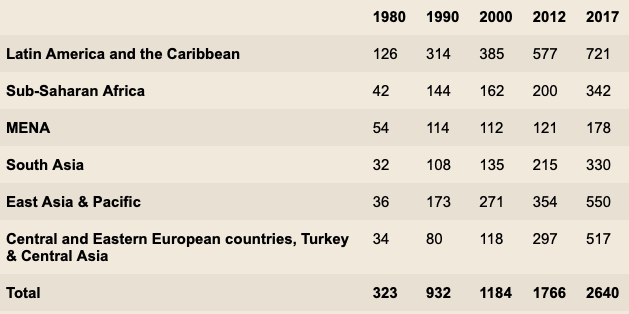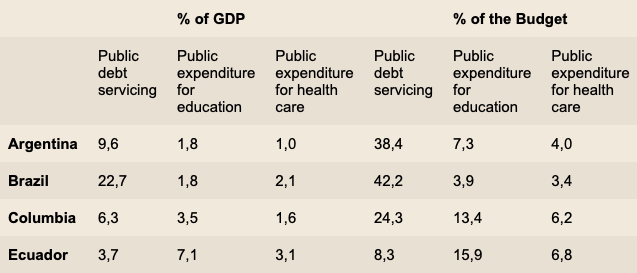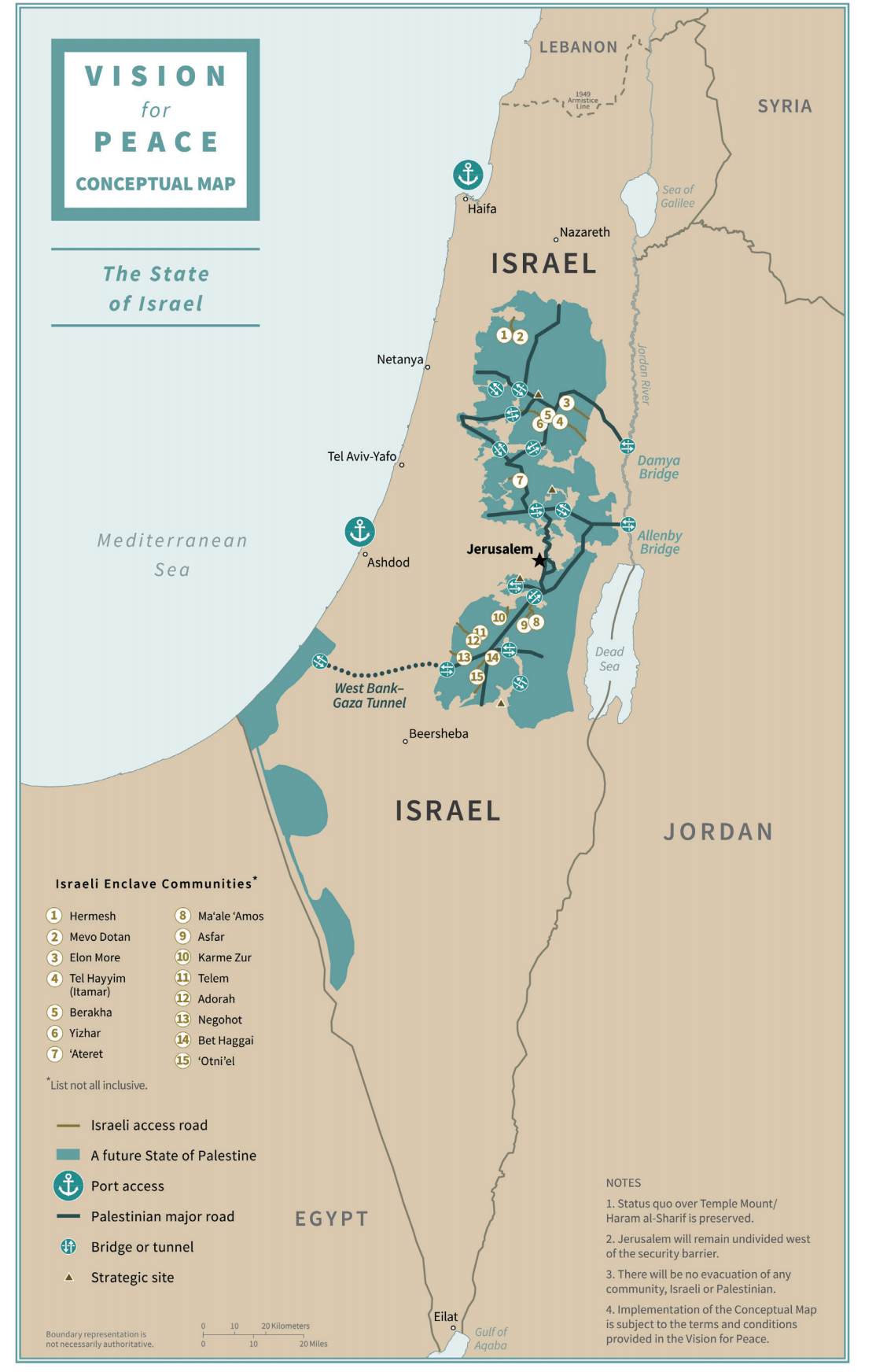The beautiful, ancient and populous Iraqi city of Fallujah (the City of Mosques) in Iraq’s Anbar province suffered 13 years of US-enforced sanctions, and then 3 bloody sieges and 2 substantial demolitions or sackings at the hands of the genocidally racist, serial war criminal and child-killing American invaders. This appalling atrocity cries out for justice and is documented in the must-read book “The Sacking Of Fallujah. A People’s History” by Ross Caputi, Richard Hil and Donna Mulhearn.
“The Sacking Of Fallujah. A People’s History” by Ross Caputi (a US Iraq War veteran and scholar), Dr Richard Hil (a British Australian sociologist and academic), and Donna Mulhearn (an Australian human rights activist and journalist) tells the tragic story of the successive, and substantial demolitions of the huge Iraqi city of Fallujah by the US Alliance, first in 2004 during the war criminal US Coalition’s Iraq War (2003-2011) and then again in 2014-2016 during the US Coalition’s ongoing War on ISIS in Syria and Iraq (2012 onwards) [1].
A key aspect of the book is that it is written from the perspective of the ordinary people of Fallujah and thus exposes the horrendous realities behind the bland Western Mainstream media headlines over 15 years announcing the “besieging of Fallujah” and the “capture of Fallujah”. Every chapter is followed by the heart-wrenching testimony (People’s stories) of ordinary Iraqis, including children. This book is deeply upsetting and should be in every library as a cry for justice and a memo to a God-less, self-absorbed and serial war criminal America: “Thou shalt not kill children”.
Before reviewing “The Sacking Of Fallujah” in detail it is useful to succinctly describe (a) the history and cultural significance of Fallujah before the US invasions, and (b) the events associated with the successive sackings of this beautiful Iraqi city by the war criminal US in the 21st century.
Prior to the US invasion Fallujah had a population of 300,000-425,000 (page 1 [1]) and was known as the City of Mosques because of about 200 mosques within the city and in surrounding villages. Fallujah is located on the Euphrates River about 70 kilometers from Baghdad in the substantially Sunni Anbar province. Fallujah dates back to Babylonian times in the first millennium BCE and indeed was a major centre for Jewish scholarship dating from that period [2]. Fallujah was successively part of the Greek Empire, the Roman Empire and the Persian Sassanian Empire before conversion to Islam in the 7th century CE. The region suffered periodic Bedouin attacks and was devastated by the Mongols in 1262. In the 13th century Iraq became part of the Turkish Ottoman Empire, this lasting until the British invasion in 1914.
Between WW1 and WW2 the British consolidated their rule of Iraq (Mesopotamia) using the nascent Royal Air Force (RAF) for the first time to subjugate Kurds, with Winston Churchill suggesting use of poison gas [3]. In the Anglo-Iraqi War in 1941 the British defeated an Iraqi army near Fallujah.
Post-WW2 formal Iraqi independence under royalist regimes saw greater functional independence (with Iraq opposing the Zionist-imposed Palestinian Genocide in Palestine) but Iraq became a member of the US-backed Baghdad Pact in 1955. In 1963 the Baathist secular socialists came to power with US-backed Saddam Hussein gaining power in 1968.
In the US-backed Iran-Iraq war the US supplied high technology weapons and poison gas – 1.5 million Iranians and 200,000 Iraqis died [4]. In 1990 the US green-lighted the Iraqi invasion of Kuwait and used this as an excuse for massive intervention in Iraq through sanctions (1990-2003), US, UK and Apartheid Israeli bombing (1990 onwards), eventual invasion, occupation and genocidal devastation (the Iraq War, 2003-2011), and then re-invasion by the US-led Coalition with substantial demolition of Fallujah and the huge city of Mosul (2014 onwards) [5]. Following the US assassination of Iranian General Qassem Soleimani and Shia Iraqi militia commander Abu Mahdi al-Muhandis at Baghdad International Airport in January 2020, the Iraqi PM, the Iraqi Parliament demanded that the US Alliance forces leave Iraq. The US, UK, Australia, Canada and Germany have rejected the Iraqi Parliament’s Quit Iraq demand, with the US threatening to instantly collapse the Iraqi economy by a banking freeze if Iraq insists on US Alliance withdrawal from its territory [20]. The active and passive killing of Iraqis by the US Alliance continues.
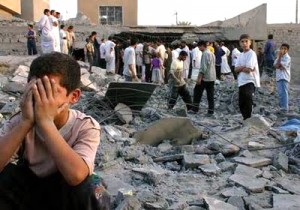
The human cost of this over 100 year Western devastation of Iraq has been horrendous as set out by Iraqi and other scholars [5-16]. British interest in invading and conquering Iraq came from discovery of oil in adjacent Iran in 1908. Western violation of Iraq commenced with the British invasion a mere 6 years later, in 1914 during WW1. The human cost since 1914 is set out below.
(a). Assuming excess mortality of Iraqis under British rule or hegemony (1914- 1948) was the same as for Indians under the British (interpolation from available data indicate Indian avoidable death rates in “deaths per 1,000 of population per year” of 37 (1757-1920), 35 (1920-1930), 30 (1930-1940) and 24 (1940-1950) [17], one can estimate from Iraqi population data [18] that Iraqi avoidable deaths from deprivation under British occupation and hegemony from 1914-1950 totalled about 4 million [5].
(b) Violent deaths and avoidable deaths from violently-imposed deprivation in the Gulf War (1990-1991) and Sanctions period (1990-2003) totalled 0.2 million and 1.7 million, respectively [5].
(c). US Just Foreign Policy organization estimates, based on the data of expert UK analysts and top US medical epidemiologists, 1.5 million violent deaths in the Iraq War (2003-2011) [6 -9] and UN data [19] indicate a further 1.2 million Iraqi avoidable deaths from war-imposed deprivation in this period [2, 15].
(d) Accordingly, Iraqi deaths from violence (1.7 million) or war-imposed deprivation (2.9 million) in the period 1990-2011 totalled 4.6 million [5].
(e ). The US ostensibly withdrew from devastated Iraq in 2011 but returned to the region with a vengeance in 2012 to help Syria, Iraq and Iran deal with ISIS in Syria (2012 onward) and thence in Iraq (2014 onwards) that has been associated with about 0.1 million violent Iraqi deaths, most notably in devastated Mosul [12] and twice US-demolished Fallujah [1]. One notes that the ruthless and barbarous ISIS subverted and took over the Sunni insurgency in Iraq against the corrupt, violent, US-installed Al Maliki Government, and similarly ISIS came to dominate the US Alliance-backed Sunni insurgency against the Assad Government in Syria [1, 20]. UN data indicate about 0.3 million avoidable Iraqi deaths from deprivation in the period 2011-2020.
(f). Ignoring Iraqi deaths associated with the US-backed Iraq-Iran War, one can estimate about 9 million Iraqi deaths from UK or US violence or imposed deprivation in the century after the 1914 invasion of Iraq by Britain, this constituting an Iraqi Holocaust and an Iraqi Genocide [5]. One notes that “Holocaust” means the death of a huge number of people. According to Article 2 of the UN Genocide Convention: “In the present Convention, genocide means any of the following acts committed with intent to destroy, in whole or in part, a national, ethnic, racial or religious group, as such: a) Killing members of the group; b) Causing serious bodily or mental harm to members of the group; c) Deliberately inflicting on the group conditions of life calculated to bring about its physical destruction in whole or in part; d) Imposing measures intended to prevent births within the group; e) Forcibly transferring children of the group to another group” [21]. The ruler is responsible for the ruled. The huge avoidable deaths of Iraqis under the British, Americans and the US Coalition is evidence of gross violation of Articles 55 and 56 of the Geneva Convention relative to the Protection of Civilian Persons in Time of War that state unequivocally that an Occupier must provide its conquered subjects with life-preserving food and medical requisites “to the fullest extent of the means available to it” [22]. These key injunctions of International Law have been grossly violated by the US and its degenerate and serial war criminal allies (notably the UK, Apartheid Israel, France and US lackey Australia) in the 2-decade US War on Terror.
What has driven the UK and thence the US to inflict this horrendous, century-long and ongoing Iraqi Holocaust and Iraqi Genocide on the birthplace of civilization, the remote and ancient land of Mesopotamia? The answer to the question is simple: oil. Thus from the Right, Alan Greenspan (leading Republican economist, chairman of the US Federal Reserve for almost two decades, and servant of four US presidents): “I am saddened that it is politically inconvenient to acknowledge what everyone knows: the Iraq war is largely about oil” [23]. And on the Left, Professor Noam Chomsky (eminent linguistics expert and anti-racist Jewish American human rights activist at 101-Nobel-Laureate Massachusetts Institute of Technology (MIT) (2009):
“There is basically no significant change in the fundamental traditional conception that if we can control Middle East energy resources, then we can control the world” [24].
And of course, the initial British invasion happened in 1914 a mere 6 years after the discovery of oil in neighbouring Iran, noting the considerable time required to reach a political decision in London and to assemble the invasion and occupation force involving British forces, Indian forces and indeed the nascent Australian Flying Corps (AFC, the precursor of the Royal Australian Air Force, the RAAF) of even more distant Australia. Indeed UK invasion of Iraq prior to 1914 (e.g. immediately after the discovery of oil in Iran in 1908) might well have precipitated war then with a Germany that was close to completing the Berlin to Baghdad railway and gaining land access to the Indian Ocean [27]. In relation to ruthless British speed to utter bastardry one notes that the UK Balfour Declaration (offering Palestine to the Zionists in an attempt to get Russian Zionists to keep Russia in the war with Germany) was issued on 2 November 1917, a mere 2 days after the victorious 31 October 1917 charge of the Australian Light Horse at Beersheba that spelled the end of Ottoman rule in Palestine.
With this background in mind, we can now consider “The Sacking of Fallujah” in detail as part of the ongoing Iraqi Holocaust and an Iraqi Genocide In reviewing this important book I have followed the order of the chapter headings and subheadings of the authors in order to ensure that the critical details of the humanitarian message get through. Each chapter is followed by an essay or compilation giving the views of Fallujans (“People’s stories”), this being a very powerful and compelling aspect of the book.
Introduction
The Introduction ignores most of the pre-1914 background presented above, but states “Fallujah has more than once been the bane of foreign invaders. The city played a leading role in anti-colonial struggles against the British in the 1920s, earning itself a reputation throughout Iraq for its patriotism, bravery, and rebellious spirit. Perhaps, not surprisingly, when the U.S.-led occupation of Iraq began in 2003 the city reemerged as a key site of armed resistance, as it did a decade later when the Iraqi government vied with the Islamic State [IS, ISIS, Daesh] for control over Anbar province (pages 1-2 [1]. The Introduction usefully summarizes the coverage of the book chapters and makes a powerful point about Western propaganda hiding the truth about the last of the sackings of Fallujah, and how IS had subverted the secular Sunni resistance against abuses of a US-installed, Shia-dominated Iraqi Government. The Introduction concludes “The Sacking Of Fallujah. A People’s History casts a critical light on a tragic conflict founded on questionable, self-serving motives, which despite all the lofty rhetoric about “freedom” and “liberty”, has delivered anything but. The conflict has lingered for fifteen years, primarily because of a lack of accountability and a failure to pay heed to the needs and aspirations of the Iraqi people. One of the intentions of this book is to establish exactly that – accountability, and to contribute to a lasting memory of what was done to Fallujah” (pages 11-12 [1]).
A criticism of the Introduction and the book is that while laudably dealing with the appalling double demolition of Fallujah, it fails to sufficiently address the horrendous magnitude of the Iraqi Holocaust and Iraqi Genocide (9 million Iraqi deaths from violence or imposed deprivation since the initial British invasion for oil in 1914, 5.0 million such Iraqi deaths since 1990, and 3.1 million such Iraqi deaths since the invasion by the US, UK and Australia in 2003 [4-16]. Indeed the terms Iraqi Holocaust and Iraqi Genocide are not used in the book except for a reference to the Geneva International Centre for Justice “arguing that the assault on Fallujah, and all of Anbar province, met the legal definition of genocide” (page 147 [1]) – many eminent scholars would agree, most notably Dennis Halliday UN Humanitarian Coordinator in Iraq from September 1, 1997, until 1998 [5]. The mendacious Western Mainstream media hugely downplay Iraqi casualties e.g. the Australian taxpayer-funded ABC, the Australian equivalent of the mendacious UK BBC, in 2011 described “a war that left tens of thousands of Iraqis and nearly 4,500 American soldiers dead” [28]. In contrast, in 1996 anti-racist Jewish American journalist Lesley Stahl asked US UN representative Madeleine Albright about Iraqi children under deadly Sanctions: “We have heard that half a million children have died. I mean, that’s more children than died in Hiroshima. And, you know, is the price worth it?” and Albright replied “we think the price is worth it” [5] – the only US admission so far (albeit only in part) of its appalling, genocidal crimes in Iraq.
And as for “accountability”, anti-racist Jewish British writer Harold Pinter in his 2005 Literature Nobel Prize Acceptance Speech stated (2005): “The invasion of Iraq was a bandit act, an act of blatant state terrorism, demonstrating absolute contempt for the concept of international law… How many people do you have to kill before you qualify to be described as a mass murderer and a war criminal? One hundred thousand? More than enough, I would have thought. Therefore it is just that Bush and Blair be arraigned before the International Criminal Court of Justice” [71]. 9.0 million? 5.0 million? 3.1 million? More than enough, I would have thought.
Chapter 1. The road to Fallujah
This chapter deals with some major themes relating to genocidal American imperialism and puts America’s Iraq invasion atrocity in an overall historical context: “Since the Declaration of Independence in 1776, America has invaded over seventy countries [72 by my count], financed pro-American paramilitaries, toppled democratically-elected leaders, engaged in targeted assassinations, and imprisoned, and tortured its opponents without trial” (page 15 [1]). However serial war criminal America did not act alone in Iraq and the serial war criminal UK has invaded 193 countries, serial war criminal and US lackey Australia 85 and serial war criminal Apartheid Israel 12 – as compared to France 82, Germany 39, Japan 30, Russia 25, Canada 25, Iraq 2, China 2, Korea arguable zero and Iran zero since the Sassanian Empire 1,300 years ago [4, 29-34]. Criticall,y the book identifies control of oil as the key imperialist imperative in Iraq: “The single most important strategic and economic factor in the region was oil” (page 15 [1]). The book makes it clear that Iraqi dictator Saddam Hussein was a US ally until the US greenlighted Iraqi invasion of Kuwait (page 17 [1]).
No numbers are given of avoidable deaths from sanctions- or war-imposed deprivation in US war zones from Libya to Pakistan but a qualitative acknowledgment is given: “The resulting death toll, given the number of civilians who have died from avoidable war-related harm, is staggering” (pages 18-19 [1]). It was estimated (2015) that 32 million Muslims had died from violence, 5 million, or from imposed deprivation, 27 million, in 20 countries invaded by the US Alliance since the US Government’s 9-11 false flag atrocity that killed 3,000 people [35, 36]. While 9-11 is mentioned as an “excuse” for US actions in Iraq there is no disputation in the book of the blindly adopted “official US version of 9-11” that would surely have made the book unpublishable, notwithstanding the reality that numerous science, architecture, engineering, aviation, military and intelligence experts conclude that the US Government was responsible for 9-11 with likely Apartheid Israeli and Saudi Arabian involvement [36]. Nevertheless subsections of Chapter 1 deal with American racism, theft and lying (“Civilizing the barbarians”), oil (“Operation Iraqi Liberation code named oil”), and massive US disinformation (“Information warfare”).
“People’s stories” after the end of Chapter 1 were collected by Dr Asmaa Khalaf Madlool of the University of Anbar, Fallujah, and bring home the shocking realities of war, noting that war is the penultimate in racism and genocide the ultimate racist atrocity. A shocking and deeply upsetting example is “Unlucky Bride”: “One day a very beautiful woman was hired by our school to teach English. Everyone was attracted to her appearance. She was a good woman, very religious, always wearing the Islamic veil… She found great happiness in her marriage. Her new family, like mine, refused to leave Fallujah during the second battle with the Americans. Perhaps they made this decision due to the large size of their family… Thus as usual, without any warrant the Americans shot the whole family. The teacher held her baby strongly to protect him, but the shooting was heavy. She and the child fell to the side of the road” (pages 35-36 [1]).
Chapter 2. Conflicting Narratives
Chapter 2 commences with an event that provided a further “excuse” for mass murder by the Americans: “On March 31, 2004, four U.S. mercenaries with the Blackwater USA private military contracting company were ambushed and killed, their bodies burned, mutilated, dragged through the city, and hug from a bridge over the Euphrates River. The bodies were still hanging when news of the ambush began to spread around the world” (page 37 [1]). The mutilation incensed the Americans. A leading American journalist, Bill O’Reilly, exhorted “Final solution… Let’s knock this place down”. Another American figure, Jack Wheeler, referenced the Roman total destruction of Carthage and Cato the Elder’s “Carthago delenda est” (“Carthage must be destroyed”) in exhorting “Fallujah delenda est… Fallujah must be destroyed… Fallujah must be physically obliterated from the face of the earth” (page 38 [1]). This hysteria indeed led to mass murder of Iraqis: “The American political leadership caved into public pressure and called for an operation to sweep and clear Fallujah of insurgents – the first siege of Fallujah, also known as Operation Vigilant Resolve or the First Battle of Fallujah. On April 5, General Kimmitt announced the initiation of operations in Fallujah” (page 39 [1]).
“People’s stories” after the end of Chapter 2 include that of a disabled man liked in the community, well known as “crazy Hazim” and who is of course shot by the Americans; a girl who unwisely unlocks a door for the Americans in a school in which her family is hiding, so the Americans, hearing the noise of the key, simply shoot her through the door; and similarly 2 old ladies hurry to open the door for the Americans who throw in a grenade that rips them apart (pages 51-52 [1]).
Chapter 3. The First Siege of Fallujah [April 2004]
Chapter 3 commences: “Four days after the killing and mutilation of the Blackwater mercenaries, Fallujah was surrounded and sealed off by Coalition checkpoints. On the evening of April 4, 2004, Operation Vigilant Resolve began” (page 53 [1]). The Americans invaded and for 6 days indulged in a war criminal orgy of killing and destruction that provoked strong reactions from both Sunni and Shia Iraqis and the world: “With uprisings across Iraq, allegations of war crimes from the international community, increasing criticism at home, and dissent within the Iraqi Governing Council and the Iraqi Army, the Coalition’s political project in Iraq was beginning to unravel. On April 9, the United States declared a “unilateral suspension of offensive operations” in Fallujah… the eventual agreement was that Fallujah’s “security” would be handed over to the Fallujah Brigade, a newly formed unit composed of former Iraqi soldiers, Iraqi police, and mujahideen… On April 30, Coalition forces withdrew completely from Fallujah… human rights and solidarity groups have counted between 572 and 749 civilians killed, including at least 300 women and children” (pages 63-64 [1] . However the cessation of American violence was only temporary: “Just as the first siege of Fallujah ended, another more determined operation was being planned to retake the city” (page 65 [1])..
“People’s stories” after the end of Chapter 3 are provided by an accounted entitled “Sami, Part I” and based on interviews by Kali Rubaii with an Iraqi boy, Sami, who was 7 years old when the First Siege of Fallujah began. The Americans ordered everyone to leave but for a variety of reasons many did not want to abandon their homes and families. Sami describes the shooting deaths of his sister, his father and then of his oldest brother; his second brother, Hameed, was shot in the ankle by an American sniper. They survived the shooting and bombing amid dead bodies and the pervasive smell of death. They heard from a mosque that the local hospital had been bombed and in the absence of medical care his brother died. He concludes; “My mother said it was time to go. We went out in the street. I felt there was always a sight on my back, that any second I would fall like my oldest brother. I imagined the scenario a lot”. They made their way out of the devastated city to relatives in a nearby town (pages 67-71 [1]). What sort of evil, criminal degenerates inflict such horrors on children?
Chapter 4. The Intersiege Information Campaign
Chapter 4 describes how the Americans had every intention of returning and destroying Fallujah but realized the prior necessity of demonizing the enemy: “The information campaign unfolded gradually, first with a change in how it characterized the enemy from “former regime elements” to Al Qaeda militants led by the Jordanian militant Abu Musab al-Zaqawi. While this rhetorical shift was barely noticeable to the American public, it created a dangerous and misleading public discourse. Military spokespersons and media commentators were now using the labels like “jihadists”, “thugs”, “terrorists”, “insurgents”, and “Al Qaeda” interchangeably, conflating and demonising all Islamic militant groups, regardless of their political goals or choice of tactic” (page 75 [1]).The name given to the Second Siege of Fallujah was Operation Phantom Fury which commenced on 8 November and concluded with destruction of most of the city.
Lying by the Bush Administration and the US military over Iraq was simply de rigeur for the American Establishment. Famed, anti-racist Jewish American journalist I.F. Stone declared: “Governments lie” [37, 38]. Great American writer and historian Gore Vidal was more specific: “Unlike most Americans who lie all the time, I hate lying. And here I am surrounded with these hills [in Hollywood] full of liars — some very talented” [39]. America has invaded 72 countries but always needed an “excuse” no matter how obviously fabricated. Thus the American Revolution in 1776 was supposedly about “freedom”, “liberty” and “no taxation without representation” but was actually about being free to expand Westwards and exterminate the Indigenous inhabitants [4]. 9-11 was the US “excuse” for the US War on Terror in which 32 million Muslims have died from violence, 5 million, or from imposed deprivation 27 million, in 20 countries invaded by the US Alliance since the US Government’s 9-11 false flag atrocity that killed 3,000 people [35, 36]. However no Iraqis or Afghans were among the 19 alleged perpetrators who were quickly identified as the culprits but were conveniently supposedly dead and thus not around to be put on trial [36]. Indeed the US Center for Public Integrity determined that the Bush Administration told 935 lies about Iraq between 9-11 and the war criminal invasion of Iraq in March 2003 [40]. There is massive lying by omission and lying by commission by Mainstream journalist, editor, politician, academic and commentariat presstitutes, noting that lying by omission is far, far worse than repugnant lying by commission because the latter can at least admit public refutation and public debate [41-43]. While the Americans have enshrined free speech (and thus the right to lie) in the First Amendment of the US Constitution, the British Establishment has draconian laws against free speech and opts for diffidence, obfuscation and lying by omission. Thus, for example, in 1942-1945 the British with Australian complicity deliberately starved 6-7 million Indians to death for strategic reasons in Bengal, Assam, Bihar and Orissa but this immense WW2 Bengali Holocaust atrocity has been almost completely whitewashed from British history by successive generations of mendacious British historians [44, 45]. Presently the US and the UK are conspiring to imprison for life the Australian truth-telling world hero, Julian Assange, for publishing details of American mendacity and war crimes, including US Coalition war crimes in Iraq [46].
People’s stories after the end of Chapter 4 include these shocking accounts: “Faithful father” (a surgeon son has to save his now legless father’s life in a corridor of a crowded hospital), “A cigarette” (a father asks his young son to go to the smashed shop across the road for cigarettes but the child is killed by an American sniper), “A dead visitor”(a dying boy knocks on the door and is taken in after the firing dies down; he dies, they bury him and all they can give the mother is his belt), and “Forbidden Bombs” (that recounts “melted” flesh and high radioactivity in Fallujah possibly indicating American use of forbidden weapons like the Apartheid Israelis in the Gaza Concentration Camp; one notes eye-witness evidence that the Americans may have used a low yield “neutron bomb-like” device to rapidly secure Baghdad Airport in the 2003 invasion, instantly massacring the defenders while minimizing damage to strategically vital infrastructure [15, 16]).
Chapter 5. The Second Siege of Fallujah [November 2004 –December 2004]
The Second Siege of Fallujah began with cowardly American bombing and the deliberate cutting of water and power to the city which was declared a “free-fire zone” . The authors: “By November 12, Coalition forces had successfully pushed from the northern edge of the city all the way to its southern limits…Muhammad Al-Darraji at the Study Centre for Human Rights and Democracy was prominent among those seeking to make plain exactly what had occurred in the wake of the second siege… Based on these figures, Al-Darraji estimates that the true number of civilian casualties during the second siege could be as high as 4,000 to 6,000” (pages 103-105 [1]). This chapter considers human rights and international law aspects of this atrocity, with the war criminal and genocidally racist Americans asserting that they followed the “rules of war”, and the world looking the other way. The chapter concludes as follows: “Living in a constant siege-like situation for years on end , Fallujah’s residents faced the daily reality of suffocating checkpoints, harassment, arrests, detention, and political discrimination. These abnormal and dehumanizing conditions led to the unraveling of the most fundamental aspects of everyday life, compounding the collective trauma of the 2004 attacks” (page 114 [1]).
People’s stories after the end of Chapter 5 include a personal account by Iraq War veteran Ross Caputi entitled “War heroes and war criminals”. His account commences: “My unit returned home from Fallujah to a hero’s welcome. The celebrations began as soon as our buses rolled onto base. There were crowds of family and friends waiting for us behind a banner that read, “Welcome Home 1st Battalion 8th Marines”… For a short period we were America’s favorite heroes – veterans of the Second Battle of Fallujah” (page 115 [1]). However slowly reality began to kick in: “As we struggled to transition , our daily emotions volleyed from rage to despair, frustration, and joy. But one thing we never had to feel was shame… … On one random Saturday morning they gave a surprise drug test, when many of us were still under the influence from the night before. Of the roughly 120 in our company, about forty failed the drug test, and almost all of them were discharged. By a stroke of luck, I passed… After sixteen years of costly and fruitless war , we are struggling to identify moments to feel good about. The liberation of Fallujah as it was told on TV, is one of a few events in our collective memory of the Global War on Terror that is consonant with our national self-image. We want to feel proud, not ashamed. So we are resistant to facts, to the experiences of our victims, to change” (pages 116-117 [1]).
Patriotic Americans would generally be aware that 3,000 people were killed on 9-11, and that about 8,500 US Alliance soldiers have died in the US War on Terror [47]. However hidden from them by mendacious Mainstream media are the following appalling post-9-11 realities: 31 million American preventable deaths from “lifestyle” or “political choice” reasons [48-53], 7 million Occupied Afghan deaths from violence or deprivation [10, 54] , 4.6 million Iraqi deaths from violence or deprivation, 1990-2011 [5, 10 41, 43] , 6.3 million World drug-related deaths, 5.2 million World opiate drug-related deaths linked to US-protected Afghan opium production in US-occupied Afghanistan, 759,000 US drug-related deaths [54, 55], and 130,000 US veteran suicides [56, 57]. Americans are utterly unware of 32 million Muslim deaths from violence, 5 million, or from deprivation, 27 million, in 20 countries invaded by the US Alliance since the US Government’s 9-11 false flag atrocity [35, 36] – the bigger the US-imposed atrocity the more assiduously is it white-washed away by mendacious, US Government-beholden Mainstream media. The long-term accrual cost to Americans of the War on Terror is about $6 trillion, a gross fiscal perversion involving successive war criminal US Administrations committing $6 trillion to killing 30 million Muslims abroad rather than trying to keep 30 million Americans alive at home.
People’s stories continue after Ross Caputi’s essay with a series of photographs and associated text covering the period 2004-2014.Surely the world must be moved by the words of 13-year old Iraqi girl, Sarah, whose family were refugees to a Baghdad refugee camp from the first US demolition of Fallujah (2004): “What does America want from us? Why did they destroy our homes? This is not their home, this is our home. Why did they come here and force us to live like this? The bombing went all day and all night. They made us homeless, they made us wander from house to house to ask if anyone can help us. Why did they come here? I want them to go” (page 118 [1]). Like Greta Thunberg’s commentary on the deadly and worsening Climate Emergency, Truth from the mouths of children, indeed.
Chapter 6. Aftermath
The authors make an initial critical observation: “The first siege of Fallujah helped unite various factions of the Iraqi insurgency, most notably the Mahdi Army led by the Shia cleric Muqtada al-Sadr with the Sunni militias. In response, the Coalition took measures to fracture this unity through a number of divide-and-conquer tactics that ultimately fostered [Shia versus Sunni] sectarian animosity. The sacking of Fallujah in November-December 2004 marked a turning point in the occupation, after which the Coalition gained the upper hand and was able to achieve several of its state-building goals, including holding elections [after killing off or otherwise neutralizing the people the US didn’t like] and drafting a new [US-imposed] constitution for [Occupied] Iraq” (page 119 [1]). This American consolidation of power with the support of Indigenous political and military elements is par for the course for numerous US invasions around the world – subvert, apply sanctions, assassinate leaders, and ultimately invade to kill off, exile or imprison people and populations you don’t like, and then hold “democratic” elections in which people you do like get elected [4] (also see William Blum, “Rogue State”, 2000; Philip Agee, “Inside the Company: CIA Diary”, 1975; and John Perkins “Confessions of an Economic Hit Man”, 2004).
A key part of Chapter 6 is concerned with medical doctors reporting an increased incidence of cancer and birth defects among Fallujans that they attributed to toxic materials generated through explosion of US shells and bombs and most notably depleted uranium (DU). However the US-installed authority, the US-installed Al Maliki Government, has an appalling record of understating horrendous medical statistics e.g. absurdly claiming that Iraqi infant mortality declined as a consequence of sanctions, invasion and devastation (as reported to the UN [19]), and claiming that rates of spontaneous abortion, still births and congenital birth defects in devastated and toxin contaminated areas of post-invasion Iraq were normal, contrary to the shocking findings of expert researchers on the spot and outside the US-installed Iraqi Health Ministry [58]. The mendacious, child-killing and genocidally war criminal Americans appear to have inflicted a post-war child health disaster on Iraq (via toxic compounds from exploded shells, mortars and bombs) just as they did on Vietnam (via teratogenic dioxins in auxin herbicides applied to destroy jungle vegetation). Dr Samira Alaani of the Fallujah Hospital: “As a consequence of the use of inhumane, indiscriminate, and toxic weapons, many people have been killed, and many are still suffering physical harm without any reparations” (page 128 [1]).
People’s stories after Chapter 6 are related in an essay by Donna Mulhearn entitled “The children of Fallujah”. She details the case of Azraq, the son of Hamid and Marwa al-Bakr, born with a serious heart defect. Marwa al-Bakr: “Fallujah has no future because of these things” (page 141 [1]).
Chapter 7. The Third Siege of Fallujah [January 2014- June 2016]
Frustration with the American legacy of a corrupt, sectarian and US-installed al-Maliki Government led to a non-violent Arab Spring protest movement in 2013 that involved Sunnis and some Shias. The fundamentalist group ISIS became involved and grew to dominate Sunni resistance in Fallujah: “On January 2 [2014], the Iraqi Ministry of the Interior reported to the press that half of Fallujah had “fallen” to ISIS… In response to this, the United States increased its level of military support to Iraq” (page 145 [1]). US-backed Iraqi forces sealed off Fallujah and commenced the Third Siege of Fallujah with indiscriminate bombing and shelling of homes and hospitals: “Civilian structures in Fallujah and elsewhere were repeatedly shelled and bombed, including hospitals, with civilians wounded and killed on a daily basis. Over the following two years, more than 3,521 civilians would be killed in Fallujah (including 840 women and 1,013 children)… In February 2014, the UN estimated that 62,679 families had been displaced , or roughly 370,000 people from Anbar province” with European human rights groups describing the assault as “genocidal” (pages 147-149 [1]). In September 2014 serial war criminal US President Barack Obama launched Operation Inherent Resolve “a joint operation conducted by an Iraqi-led coalition of nations against IS and the Sunni uprising (the latter being conflated with the former). History was being actively rewritten… [it] went on to “liberate” villages and major cities, including Tikrit and Ramadi, and to slowly roll back IS’s territorial gains over the next two years. However, every victory against IS was mired in accusations against the PMU’s [the Iranian-backed, mostly Shia Popular Mobilization Units] of war crimes and ethnic cleansing” (page 152 [1]).
The UN estimated in mid-2016 that 87,000 people had fled the city. Chapter 7 concluded : “While the conditions in the refugee camps were appalling, Fallujah itself was destroyed yet again and left completely uninhabitable. When the operation officially concluded on June 6 [2016], Iraqi officials stated that the city had been “laid to waste”. Preliminary reports claimed that Fallujah’s basic infrastructure was “almost completely destroyed” and that 400 educational facilities, 238 health centres, 44 residential compounds, 7,000 homes, and 6,000 shops were heavily damaged, many beyond repair” (page 158 [1]).
People’s stories after Chapter 7 are set out in “Sami, Part II” by Kali Rubaii. Sami fled the First Siege of Fallujah with his surviving family to Saqlawiya in 2004. Sami: “What can I tell you? That I dropped out of school when I was only twelve? That I can’t read because the Americans took my education? That I will never marry because I cannot afford to feed even my own family? That I am responsible for my entire [surviving] kin, for feeding and clothing my siblings, my mother? That I am making man decisions at the age of a child? That I watched all the men die? That the only way out of this is to become like them? That I fear for my life every time I move? That I have no future?” (pages 159-160 [1]).
Conclusion
The authors state “The official story of Fallujah, as told by the mainstream media, recounts the heroic efforts of U.S. soldiers to vanquish an evil enemy and liberate helpless civilians. But as we have argued, this narrative was constructed as propaganda, largely to pacify Western – and particularly U.S. – audiences so that Coalition forces could crush the resistance movement in Fallujah, unencumbered by the constraints of the Geneva Convention” (page 163 [1]). Indeed the authors further state: “According to British commentator Jonathan Holmes, the 2004 sieges of Fallujah contravened seventy individual articles of the Geneva Conventions and were in breach of nearly every major area of concern identified by them” (page 170 [1]). The authors conclude “Central to the Coalition’s attempt to subdue the Iraqi people was a campaign to present a certain version of history that excluded ordinary people from the dominant narrative. This is a time-honored strategy used by Western powers, indeed of all those who seek to assert dominance over other nations” (page 172 [1]).
The authors commented on Coalition’s “liberation” of the city of Mosul (population 2 million): “The operation began on October 17 [2016], and on July 9, 2017, culminated in the Islamic State being forced out of its last stronghold in Iraq. Predictably, the victory came at a heavy price. Amnesty International estimated that 600,000 residents were displaced from Mosul. According to an investigation by the Associated Press, the total civilian death toll from the operation is estimated to be 9,000 and 11,000. The numbers are potentially much higher” (page 166 [1]). However leading UK Middle East journalist, Patrick Cockburn, reporting on the latest awful episode of the Iraqi Genocide in Mosul, stated (2017):“More than 40,000 civilians were killed in the devastating battle to retake Mosul from Isis [IS], according to intelligence reports revealed exclusively to The Independent – a death toll far higher than previous estimates” [12, 59].
For all that ISIS was evidently barbarous and fanatical with an extremist Islamic ideology, a peaceful alternative to more US Alliance-imposed Iraqi Genocide through the near-total destruction of the Iraqi cities of Mosul, Ramadi and Fallujah on the basis of IS occupation was always possible. Thus, for example, the fundamentalist Muslim, Sharia Law-committed Free Aceh Movement (Gerakan Aceh Merdeka or GAM) fought against Indonesian government forces in the Aceh insurgency in Sumatra from 1976 to 2005, during which over 15,000 people were killed. After the calamitous 2004 tsunami (170,000 Indonesians killed, mostly in Sumatra) there was a peace agreement between Aceh and the Indonesian Government in 2005 involving cessation of violence and considerable Acinese autonomy. The killing stopped at the price of imposition of Sharia Law in Aceh – thus, for example, unmarried lovers, women with a penchant for “immodest dress”, homosexuals and apostates would have their human rights and civil rights grossly violated and they would have to move from Aceh to elsewhere in Indonesia to avoid extreme mediaeval punishment ranging from caning to execution, but at least the war and killing stopped. Churchill’s “jaw, jaw instead of war, war” is always possible but faltered in Iraq in the face of American greed, mendacity, racism and exceptionalist violence that exceeded in barbarity that of repugnant ISIS. One notes that the US with Australian complicity backed Islamist rebels in the Indonesian provinces of Sumatra and Sulawesi in the 1950s and 1960s (page 132, Brian Toohey “Secret”). Indeed the US has a long history of backing jihadi and other terrorist groups (from backing church-bombing gangs in Ecuador, Latin American deaths squads and Gladio terrorists in Europe to backing jihadis in Afghanistan, Kosovo, Yemen, Libya and Syria. Jihadis in Syria (eventually dominated by IS) were variously backed by countries of the US Alliance (the UK, US, France, Turkey, Apartheid Israel, and Saudi Arabia). Indeed jihadi non-state terrorists have been the greatest asset of resources-driven US imperialism, with any jihadi atrocity providing an “excuse” for horrendously disproportionate US violence.
Fallujans did not just die from violence during the 30 year, US-imposed Iraqi Holocaust and Iraqi Genocide – they also died in their tens of thousands from sanctions- and war-imposed deprivation [4, 19]. Assuming the upper estimate of the pre-war Fallujah population of 425,000 (page 1 [1]) one can attempt to determine the number of avoidable deaths from deprivation in sanctions- and war-devastated Fallujah over the last 30 years. The US-installed al-Maliki Iraqi Government has egregiously lied about the health circumstances of Iraqis (e.g. claiming that the death rate decreased after the US invasion) so we need to look elsewhere for estimates of “annual avoidable deaths from deprivation per thousand of population”. In similarly war-ravaged and US Coalition-occupied Somalia the figure is 6.6 and applying this to Fallujah yields 6.6 deaths per thousand of population per year x 425 thousand of population x 30 years = 84,000 Fallujan avoidable deaths from imposed deprivation over the last 30 years of sanctions and thence invasion and occupation (applying the lying Iraqi Government’s figure of 1.7 the estimate is 22,000).
Afterward. Fallujah. My Lost Country
People’s stories: in an Afterward entitled “Fallujah. My Lost Country”, expatriate Iraqi journalist Feurat Alani (originally from Fallujah) writes about the tragedy imposed on his country by the rich, oil-hungry and serial war criminal America and its allies the degenerate UK and US lackey Australia. He writes about the deadly sanctions imposed on Iraq: “Everyone was hungry. Everyone was angry. I was fifteen when I saw my cousins go to work at the market instead of attending school. Fifteen years old when I learned that Iraq didn’t have the right to import pencils. The country that had invented writing deprived of pencils – how ironic. I saw hospitals without beds. Sick people without medicine. The Iraq I knew in 1989 [prior to the 1990-2003 Sanctions] slipped further and further away from me” (page 174 [1]. From pre-al-Maliki regime UN Population Division data it is estimated that 1.7 million Iraqi died avoidably from imposed deprivation under Sanction [5]. Indeed Dennis Halliday, UN Humanitarian Coordinator in Iraq from September 1, 1997 until 1998, resigned after 34 years with the UN, including being UN assistant secretary-general, over the deadly Sanctions imposed on Iraq, characterizing them as “genocide”[5].
Feurat Alani presents a shocking statistic “To this day, one child out of five in Fallujah is born with a deformity” and concludes “This is a question of justice, of the oppressor and the oppressed, of the strong and the weak. Every honest and upstanding human being should be engaged in this fight. Whether in the case of, Palestine, or any other country where human rights are scorned and injustice reigns” (page 176 [1]). Careful analysis reveals that the sorely oppressed Occupied Palestinians are excluded by Apartheid Israel from all 30 Articles of the Universal Declaration of Human Rights [60].
Following the US assassination of Iranian General Qassem Soleimani and Shia Iraqi militia commander Abu Mahdi al-Muhandis at Baghdad International Airport, the Iraqi PM, the Iraqi Parliament Speaker and the Iraqi Parliament have demanded that US Alliance forces leave Iraq. The US, UK, Australia, Canada and Germany have rejected the Iraqi Parliament’s Quit Iraq demand, with fervently pro-Zionist, pro-Apartheid Israel, pro-Apartheid, anti-Arab anti-Semitic and Islamophobic Trump America threatening to instantly collapse the Iraqi economy by a banking freeze if mostly Arab and Muslim but unfortunately oil-rich Iraq insists on US Alliance withdrawal from its territory [20]. The egregiously racist, serial war criminal and nuclear terrorist states of Apartheid Israel and Zionist-subverted America continue to bomb targets in Iraq with threats to destroy neighbouring, oil- and gas-rich Iran in which some 70,000 people presently die avoidably from deprivation each year under deadly US sanctions [4, 19]. Since the 1979 Iranian Revolution that removed the US-installed Shah, the US has conducted a War on Iran through outright violence (as in the US-backed Iran- Iraq War), through application of deadly sanctions, and through the deadly impact of opiate drugs from US-occupied Afghanistan. Iranian deaths in the 4-decade US War on Iran have totalled 4 million, including 1 million from violence and 3 million avoidable deaths from war- and sanctions-imposed deprivation. Now the war criminal and nuclear terrorist UK, US and Apartheid Israel are itching for Trump’s adumbrated “obliteration” of Iran. [61] . The killing continues.
Final comments
The 3 sieges of Fallujah, the 2 demolitions of Fallujah, the ongoing Iraqi Holocaust and Iraqi Genocide, and the ongoing Muslim Holocaust and Muslim Genocide cry out for justice. However, it is highly unlikely that America’s George Bush, the UK’s Tony Blair, and US lackey Australia’s John Howard, their associates and successors – notably serial war criminal Barack Obama and serial war criminal Donald Trump – will ever be arraigned before the racist, Iraqi Genocide-ignoring and Iraqi Holocaust-ignoring International Criminal Court (ICC). What can decent people do? Decent, humane people around the world must (a) penetrate the Mainstream Media Wall of Silence and tell everyone they can about the ongoing, blood-for-oil Iraqi Genocide, and (b) urge and apply Boycotts, Divestment and Sanctions (BDS) against all people, politicians, parties, companies, corporations and countries complicit in the ongoing Iraqi Genocide and the ongoing Muslim Genocide and Muslim Holocaust. Peace is the only way but silence kills and silence is complicity.
*
Note to readers: please click the share buttons above or below. Forward this article to your email lists. Crosspost on your blog site, internet forums. etc.
This article was originally published on Countercurrents.
Dr Gideon Polya taught science students at a major Australian university for 4 decades. He published some 130 works in a 5 decade scientific career, most recently a huge pharmacological reference text “Biochemical Targets of Plant Bioactive Compounds” (CRC Press/Taylor & Francis, New York & London , 2003).
Notes
[1]. Ross Caputi, Richard Hil, and Donna Mulhearn, “The Sacking Of Fallujah. A People’s History”, University of Massachusetts Press, 2019.
[2]. “Fallujah”, Wikipedia: https://en.wikipedia.org/wiki/Fallujah .
[3]. “Alleged British use of chemical weapons in Mesopotamia in 1920”, Wikipedia: https://en.wikipedia.org/wiki/Alleged_British_use_of_chemical_weapons_in_Mesopotamia_in_1920 .
[4]. Gideon Polya, “Body Count. Global avoidable mortality since 1950”, that includes a succinct history of every country and is now available for free perusal on the web: http://globalbodycount.blogspot.com/ .
[5]. “Iraqi Holocaust, Iraqi Genocide”: https://sites.google.com/site/iraqiholocaustiraqigenocide/ .
[6]. “Just Foreign Policy”: http://www.justforeignpolicy.org/iraq .
[7]. ORB (Opinion Research Business), “January 2008 – Update on Iraqi Casualty Data”, January 2008: http://www.opinion.co.uk/Newsroom_details.aspx?NewsId=88 .
[8]. Les Roberts, “Les Roberts: Iraq’s death toll far worse than our leaders admit”, Uruqnet: 14 February 2007: http://www.uruknet.de/?s1=1&p=30670&s2=16
[9]. G. Burnham, R. Lafta, S. Doocy and L. Roberts, “Mortality after the 2003 invasion of Iraq: a cross-sectional cluster sample survey”, The Lancet 2006 Oct 21;368(9545):1421-8: http://www.ncbi.nlm.nih.gov/pubmed/17055943 .
[10]. “Muslim Holocaust Muslim Genocide”: https://sites.google.com/site/muslimholocaustmuslimgenocide/ .
[11]. Gideon Polya, “12th Anniversary Of Illegal Iraq Invasion – 2.7 Million Iraqi Dead From Violence Or War-imposed Deprivation”, Countercurrents, 23 March, 2015: https://www.countercurrents.org/polya230315.htm
[12]. Gideon Polya, “Mosul Massacre latest in Iraqi Genocide”, Countercurrents, 24 July 2017: https://countercurrents.org/2017/07/mosul-massacre-latest-in-iraqi-genocide-us-alliance-war-crimes-demand-icc-bds
[13]. Abdul-Haq Al-Ani and Tarik Al-Ani (foreword by Professor Joshua Castellino), “Genocide in Iraq Volume I . The case against the UN Security Council and member states”, Clarity Press, Atlanta, 2013.
[14]. Gideon Polya ““Genocide in Iraq, The Case Against UN Security Council And Member States”. Book review”, Countercurrents, 8 February, 2013: http://www.countercurrents.org/polya080213.htm .
[15]. Abdul-Haq Al-Ani and Tariq Al-Ani, “Genocide in Iraq Volume II. The Obliteration of a Modern State”, Clarity Press, 2015.
[16]. Gideon Polya, “Review: “Genocide in Iraq Volume II. The obliteration of a modern state” By Abdul-Haq Al-Ani & Tariq Al-Ani”, Countercurrents, 15 March 2015: http://www.countercurrents.org/polya150315.htm .
[17]. Gideon Polya, “Economist Mahima Khanna wins Cambridge Prize”, MWC News, 20 November 2011: http://mwcnews.net/focus/analysis/14978-economist-mahima-khanna.html .
[18]. “Iraq Population”: http://www.populstat.info/Asia/iraqc.htm .
[19]. “UN Population Division. World Population Prospects 2019”: https://population.un.org/wpp/DataQuery/ .
[20]. Gideon Polya, “US, UK, Australia, Canada & Germany Reject Iraqi Parliament’s Quit Iraq Demand”, Countercurrents, 16 January 2020: https://countercurrents.org/2020/01/us-uk-australia-canada-germany-reject-iraqi-parliaments-quit-iraq-demand ).
[21]. UN Genocide Convention: http://www.edwebproject.org/sideshow/genocide/convention.html .
[22]. Geneva Convention Relative to the Protection of Civilian Persons in Time of War: https://www.icrc.org/ihl/INTRO/380 .
[23]. Peter Beaumont and Joanna Walters, “Greenspan admits Iraq was about oil, as deaths put at 1.2m”, The Observer, 16 September 2007: http://www.theguardian.com/world/2007/sep/16/iraq.iraqtimeline .
[24]. Noam Chomsky quoted in Sherwood Ross, “Chomsky: Iraq invasion “major crime” designed to control Middle East oil”, The Public Record, 3 November 2009: http://pubrecord.org/nation/5953/chomsky-invasion-major-crime/ .
[25]. “The discovery of oil in the Middle East”, The history of Western civilization II: https://courses.lumenlearning.com/suny-hccc-worldhistory2/chapter/the-discovery-of-oil-in-the-middle-east/ .
[26]. “Petroleum industry in Iran”, Wikipedia: https://en.wikipedia.org/wiki/Petroleum_industry_in_Iran .
[27]. “History of the Royal Australian Air Force“, Wikipedia: https://en.wikipedia.org/wiki/History_of_the_Royal_Australian_Air_Force .
[28]. Ann Barker, “US military marks end of its Iraq war”, ABC News, 16 Decemebr 2011: https://www.abc.net.au/news/2011-12-15/us-military-marks-end-of-its-war-in-iraq/3733982 .
[29]. Gideon Polya, “The US Has Invaded 70 Nations Since 1776 – Make 4 July Independence From America Day”, Countercurrents, 5 July, 2013: http://www.countercurrents.org/polya050713.htm .
[30]. Gideon Polya, “British Have Invaded 193 Countries: Make 26 January ( Australia Day, Invasion Day) British Invasion Day”, Countercurrents, 23 January, 2015: http://www.countercurrents.org/polya230115.htm .
[31]. Gideon Polya, “As UK Lackeys Or US Lackeys Australians Have Invaded 85 Countries (British 193, French 80, US 70)”, Countercurrents, 9 February, 2015: http://www.countercurrents.org/polya090215.htm .
[32]. Gideon Polya, “President Hollande And French Invasion Of Privacy Versus French Invasion Of 80 Countries Since 800 AD”, Countercurrents, 15 January, 2014: http://www.countercurrents.org/polya150114.htm .
[33]. “Stop state terrorism” : https://sites.google.com/site/stopstateterrorism/ .
[34]. “State crime and non-state terrorism”: https://sites.google.com/site/statecrimeandnonstateterrorism/ .
[35]. Gideon Polya, “Paris atrocity context: 27 Million Muslim Avoidable Deaths From Imposed Deprivation In 20 Countries Violated By US Alliance Since 9-11”, Countercurrents, 22 November, 2015: https://countercurrents.org/polya221115.htm .
[36]. “Experts: US did 9-11”: https://sites.google.com/site/expertsusdid911/ .
[37]. I.F. Stone, quoted in “Two words – governments lie. Iraqi oil, climate change and Tony Blair”, Media Lens, 22 January 2003: http://www.medialens.org/index.php?option=com_content&view=article&id=239:two-words-governments-lie-iraq-oil-climate-change-and-tony-blair&catid=17:alerts-2003&Itemid=42 .
[38]. I.F. Stone, quoted in Gideon Polya, “Iraqi Holocaust”, ConScience, Australasian Science, 2 June 2004: http://www.shiachat.com/forum/index.php?/topic/33427-iraqi-holocaust/ .
[39]. Gore Vidal interviewed by Melvyn Bragg on the South Bank Show”, 2008: http://warincontext.org/2012/08/01/remembering-gore-vidal-change-is-the-nature-of-life-and-its-hope/ .
[40]. “Study: Bush, aides made 935 false statements in run-up to war”, CNN, 2004: http://edition.cnn.com/2008/POLITICS/01/23/bush.iraq/ .
[41].” Mainstream media lying”: https://sites.google.com/site/mainstreammedialying/home .
[42]. Mainstream media censorship”: https://sites.google.com/site/mainstreammediacensorship/home .
[43]. Gideon Polya, “Mainstream media fake news through lying by omission”, MWC News, 1 April 2017: https://sites.google.com/site/mainstreammedialying/2017-04-01 .
[44]. Gideon Polya, “Australia And Britain Killed 6-7 Million Indians In WW2 Bengal Famine”, Countercurrents, 29 September, 2011: https://countercurrents.org/polya290911.htm .
[45]. “Bengali Holocaust (WW2 Bengal Famine) writings of Gideon Polya”: https://sites.google.com/site/drgideonpolya/bengali-holocaust .
[46]. Gideon Polya, “Craven US lackey Australia betrays Australian & World hero Julian Assange & free journalism”, Countercurrents, 13 April 2019: https://countercurrents.org/2019/04/craven-us-lackey-australia-betrays-australian-world-hero-julian-assange-free-journalism .
[47]. “i-casualties”: http://icasualties.org/ .
[48]. Gideon Polya, “14 million Americans will die preventably under a 2-term Trump Administration”, Countercurrents, 22 March 2017: https://countercurrents.org/2017/03/over-14-million-americans-will-die-preventably-under-a-2-term-trump-administration .
[49]. Gideon Polya, “Movie review: “Who to Invade Next” by Michael Moore – Hammer, chisel down for social humanism”, Countercurrents, 23 April 2016: https://countercurrents.org/polya230416.htm .
[50]. Gideon Polya, “One million Americans die preventably annually in USA ”, Countercurrents, 18 February 2012: http://www.countercurrents.org/polya180212.htm .
[51]. Gideon Polya, “American Holocaust, Millions Of Untimely American Deaths And $40 Trillion Cost Of Israel To Americans”, Countercurrents, 27 August, 2013: http://www.countercurrents.org/polya270813.htm .
[52]. Gideon Polya, “One Percenter Greed & War Means Over 1.5 Million Americans Die Preventably Each Year”, Countercurrents, 19 September, 2014: http://www.countercurrents.org/polya190914.htm.
[53]. Gideon Polya, “West Ignores 11 Million Muslim War Deaths & 23 Million Preventable American Deaths Since US Government’s False-flag 9-11 Atrocity”, Countercurrents, 9 September, 2015: http://www.countercurrents.org/polya090915.htm .
[54]. “Afghan Holocaust Afghan Genocide”: https://sites.google.com/site/afghanholocaustafghangenocide/ .
[55]. Gideon Polya, “US-imposed Opiate Holocaust – US protection of Afghan opiates has killed 5.2 million people since 9-11”, Countercurrents, 10 August 2019: https://countercurrents.org/2019/08/us-imposed-opiate-holocaust-us-protection-of-afghan-opiates-has-killed-5-2-million-people-since-9-11 .
[56]. Gideon Polya, “ Australian state terrorism (4). Jingoistic, US Lackey Australia’s Deadly Betrayal Of Its Traumatized Veterans”, Stop state terrorism, 2018: https://sites.google.com/site/stopstateterrorism/australian-state-terrorism-4 .
[57]. Dr Janet Kemp and Dr Robert Bossarte, “Suicide data report, 2012”, Department of Veterans Affairs, Mental Health Services, Suicide Prevention Program, especially Figure 3: http://www.va.gov/opa/docs/Suicide-Data-Report-2012-final.pdf .
[58]. Neel Mani (Director of the World Health Organisation’s Iraq programme between 2001-2003, “Iraq: politics and science in post-conflict health research”, Huffington Post, 15 October 2014: https://www.huffingtonpost.co.uk/neel-mani/iraq-politics-and-science_b_4098231.html.
[59]. Patrick Cockburn, “The massacre of Mosul: 40,000 feared dead in battle to take back city from Isis as scale of civilian casualties revealed ”, Independent, July, 2017: http://www.independent.co.uk/news/world/middle-east/mosul-massacre-battle-isis-iraq-city-civilian-casualties-killed-deaths-fighting-forces-islamic-state-a7848781.html .
[60]. Gideon Polya, “Apartheid Israel Excludes Occupied Palestinians From All Provisions Of The Universal Declaration Of Human Rights”, Countercurrents, 20 May, 2012: https://countercurrents.org/polya200512.htm .
[61]. Gideon Polya, “Apartheid Israel bombing Syria & Iraq – hotting deadly 4-decade US War on Iran”, Countercurrents, 14 August 2019: https://countercurrents.org/2019/08/apartheid-israel-bombing-syria-iraq-hotting-up-deadly-4-decade-us-war-on-iran

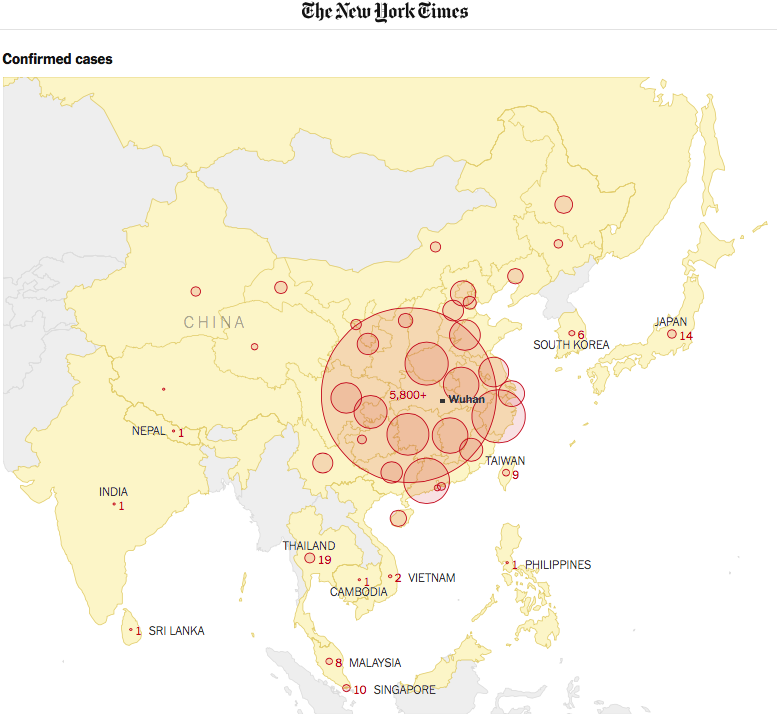

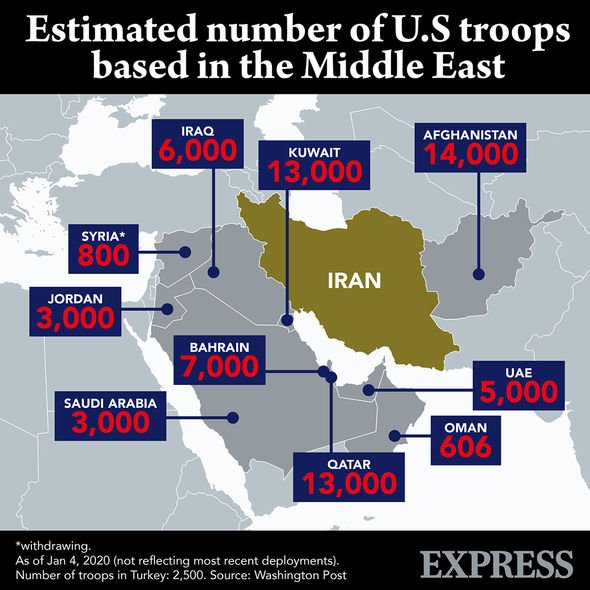
 Can you
Can you 











